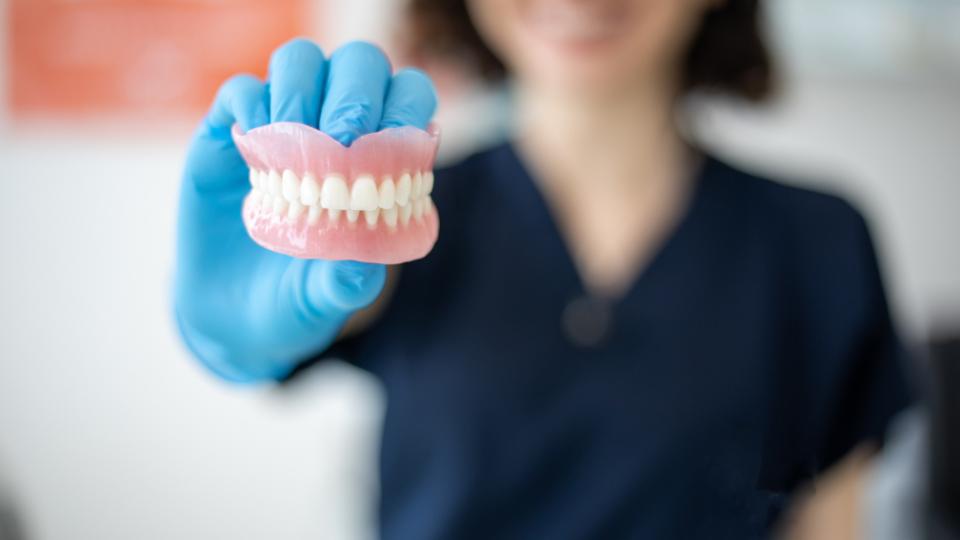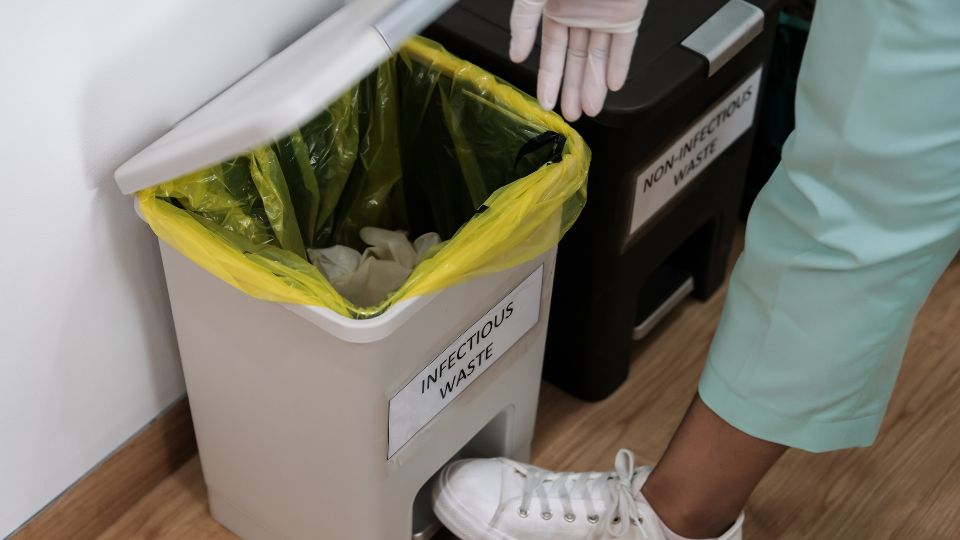
Table of Contents
- What types of dental X-Ray waste require specialist disposal?
- Disposing of Dental X-ray Film
- Disposing of Developer and Fixer Solutions
- Disposing of Lead Foil
- Resources for Responsible Disposal in the UK
Disposing of dental X-rays might not be at the top of your mind, but it’s an important part of protecting your health and the environment.
This article dives into the different types of dental X-ray waste, and how to dispose of them safely and responsibly.
We’ll cover everything from X-ray film to developer solutions and lead foil, providing a step-by-step guide for dental offices.
Learn how to partner with a licensed disposal company and ensure your X-ray waste never ends up in the wrong place.
What types of dental X-Ray waste require specialist disposal?
Dental X-rays provide valuable insights into your oral health, but the process generates waste that requires special handling.
This includes:
X-ray film
These aren’t your average photos! Traditional X-ray film contains silver and needs specific processing chemicals.
Developer and fixer solutions
These liquid companions to the film help create the image but contain hazardous materials like silver and formalin.
Lead foil
Those protective shields wrapped around you during X-rays? They use lead, a heavy metal that needs proper disposal to avoid environmental contamination.
Disposing of Dental X-ray Film
Dental X-ray film disposal follows a specific process to ensure patient privacy, environmental protection, and compliance with regulations.
Here’s a breakdown:
1. After Use
- Segregation: Place exposed X-ray film in a designated rigid, puncture-resistant container labeled for “X-ray film waste” or with the universal biohazard symbol. Never mix X-ray film with regular trash.
2. Collection
- Frequency: The frequency of removing film from the small bin depends on your office’s X-ray volume. Generally, replace the bin when it’s ¾ full to avoid overfilling and potential spills.
- Transfer: Carefully transfer the used film into a larger, designated container provided by your licensed medical waste disposal company.
3. Licensed Disposal
- Waste Management Service: Partner with a reputable medical waste disposal company licensed to handle X-ray film. They’ll provide the larger containers, transport protocols, and proper disposal procedures. Do not attempt to dispose of X-ray film yourself.
- Manifesting: The disposal company will provide a manifest form to document the type and quantity of X-ray waste. Ensure accurate completion for tracking purposes.
- Collection: The medical waste disposal company will schedule regular pickups based on your agreement.
*Remember
Maintain proper documentation from your medical waste disposal company for record-keeping purposes.
Disposing of Developer and Fixer Solutions
Developer and fixer solutions, crucial for processing dental X-ray film, contain hazardous chemicals and require special disposal to protect human health and the environment.
Here’s a guide for responsible removal:
1. Storage and Segregation
- Designated Containers: Store developer and fixer solutions in their original, labeled containers throughout their use. Never mix these solutions or dispose of them down the drain.
- Neutralization (Optional): Some waste disposal companies offer pre-treatment kits for developer solutions to neutralise their hazardous properties before collection. Check with your chosen provider for specific instructions.
2. Collection and Disposal
- Licensed Disposal Company: Partner with a licensed medical waste disposal company authorised to handle chemical waste. They’ll provide the proper containers, transportation, and disposal procedures.
- Transfer: Once the solutions are exhausted, carefully transfer them from the original containers into the designated containers provided by your disposal company.
Ensure these containers are properly labeled for “hazardous waste” and the specific chemical contents.
- Manifesting: The disposal company will provide a manifest form to document the type and quantity of chemical waste. Fill it out accurately for tracking purposes.
- Collection: The medical waste disposal company will schedule regular pickups based on your agreement.
Disposing of Lead Foil
Lead foil plays a vital role in protecting patients from unnecessary radiation during X-rays. However, due to its heavy metal nature, proper disposal is crucial to avoid environmental contamination.
Here’s how to responsibly manage your dental lead foil waste:
1. Segregation and Storage
- Designated Container: Place used lead foil in a designated, puncture-resistant container labeled for “lead waste” or with the universal biohazard symbol.
Never dispose of lead foil with regular trash or mix it with other types of dental waste.
- Filling the Container: Unlike X-ray film, lead foil can be compressed to some extent. Fill the container to its designated capacity, but avoid overstuffing that could cause tearing or spills.
2. Collection and Disposal
- Licensed Disposal Company: Partner with a reputable medical waste disposal company licensed to handle lead waste. These companies will provide the proper containers, transportation, and disposal procedures.
- Transfer: Once the lead foil container is full, carefully transfer it to the larger container provided by your disposal company. Ensure this container is also properly labeled for “lead waste.”
- Manifesting: The disposal company will provide a manifest form to document the type and quantity of lead waste. Complete it accurately for tracking purposes.
- Collection: The medical waste disposal company will schedule regular pickups based on your agreement.
Resources for Responsible Disposal in the UK
Feeling a bit lost on where to start with responsible X-ray disposal?
Here are some resources to help you navigate the process:
- Your Local Dental Association: These associations are a great source of information on X-ray disposal options in your area.
They might also have partnerships with recycling programs or medical waste disposal companies.
- Your Local Council: They’ll be able to provide details on specific regulations for medical waste disposal in your area.
- The Environment Agency: This is the governing body responsible for environmental protection in England.
They offer a wealth of information on proper waste disposal practices, including guidelines for medical waste.
You can find similar resources for Scotland, Wales, and Northern Ireland through their respective environmental agencies.
By following these simple steps, you can ensure your dental X-rays are disposed of safely and responsibly. Remember, a healthy smile shouldn’t come at the cost of a healthy planet.
By making informed choices about X-ray disposal, you can contribute to a greener UK, one bright smile at a time.







